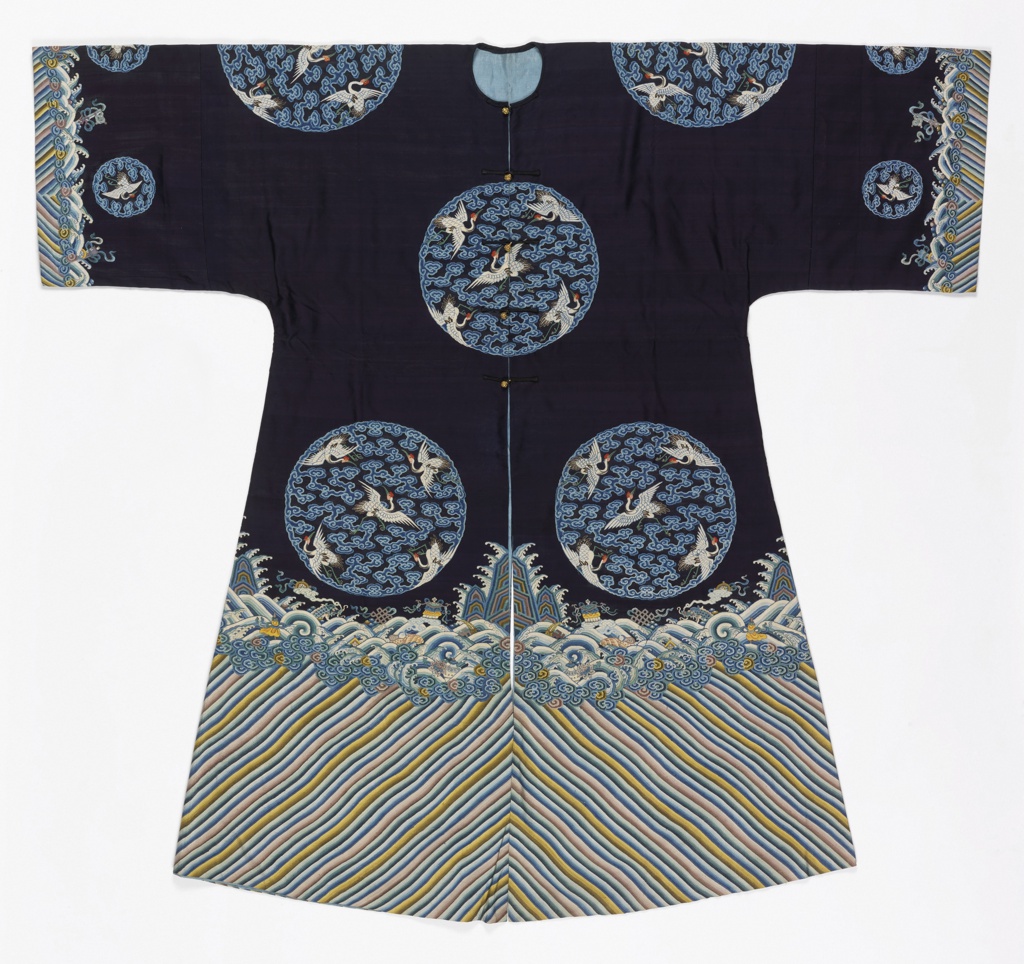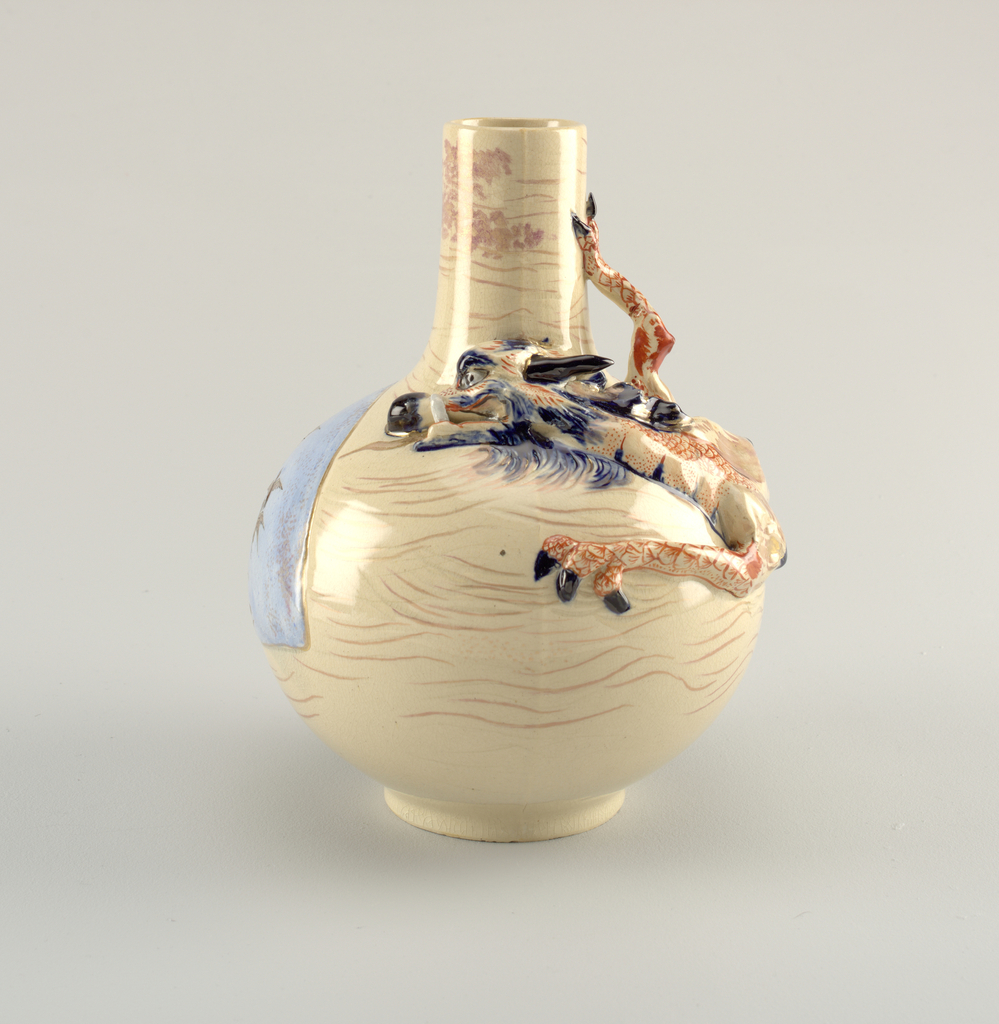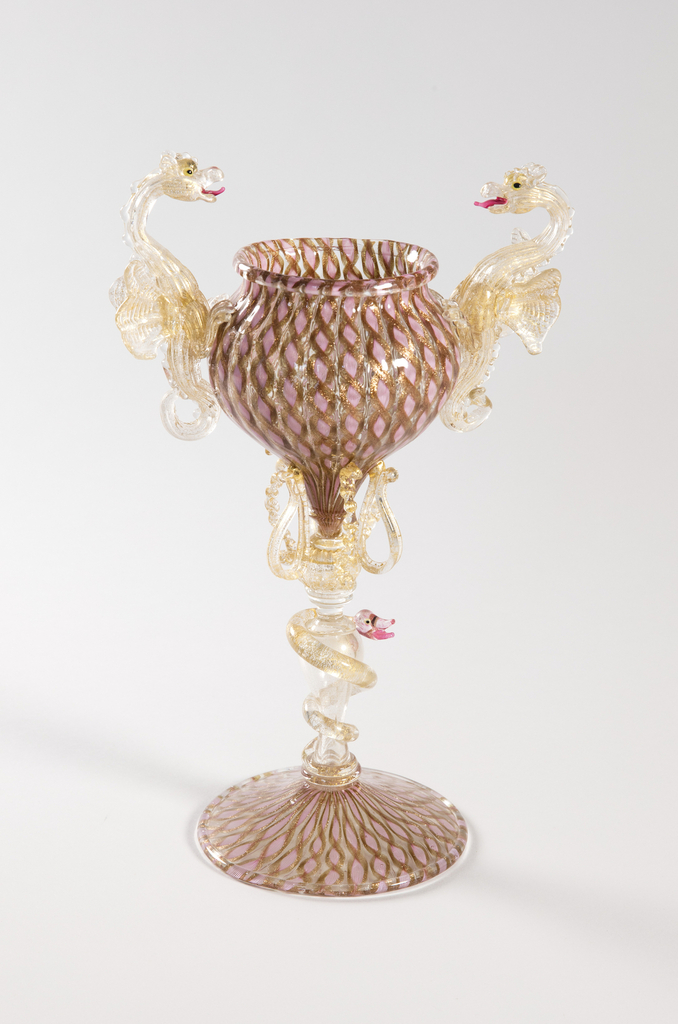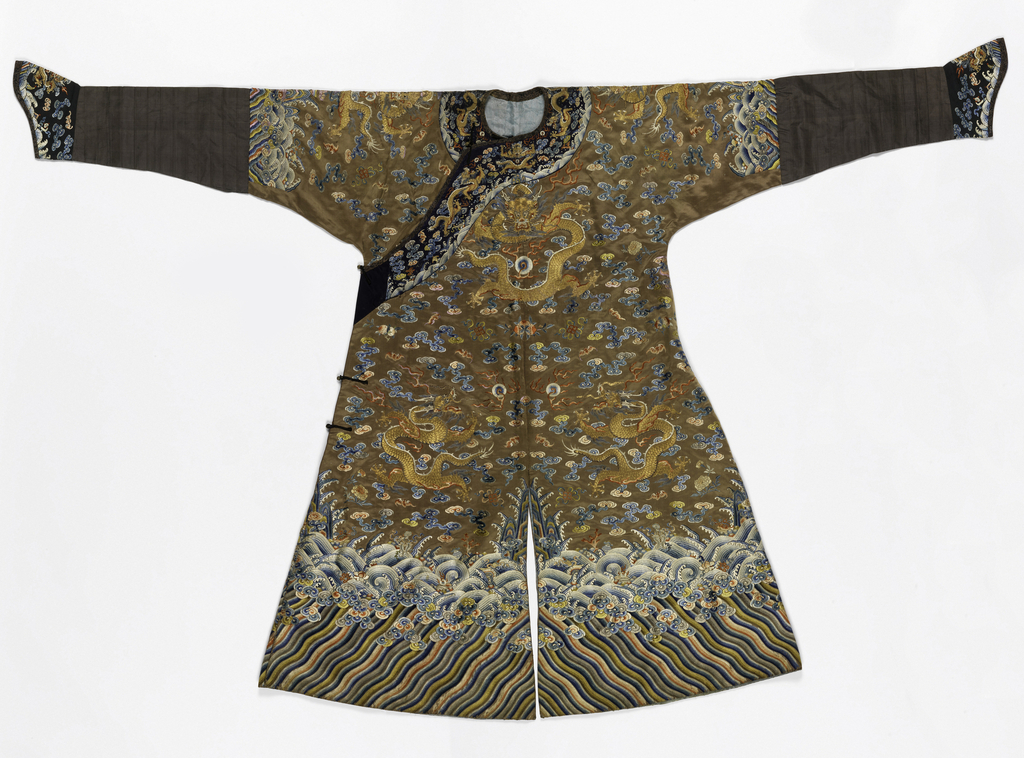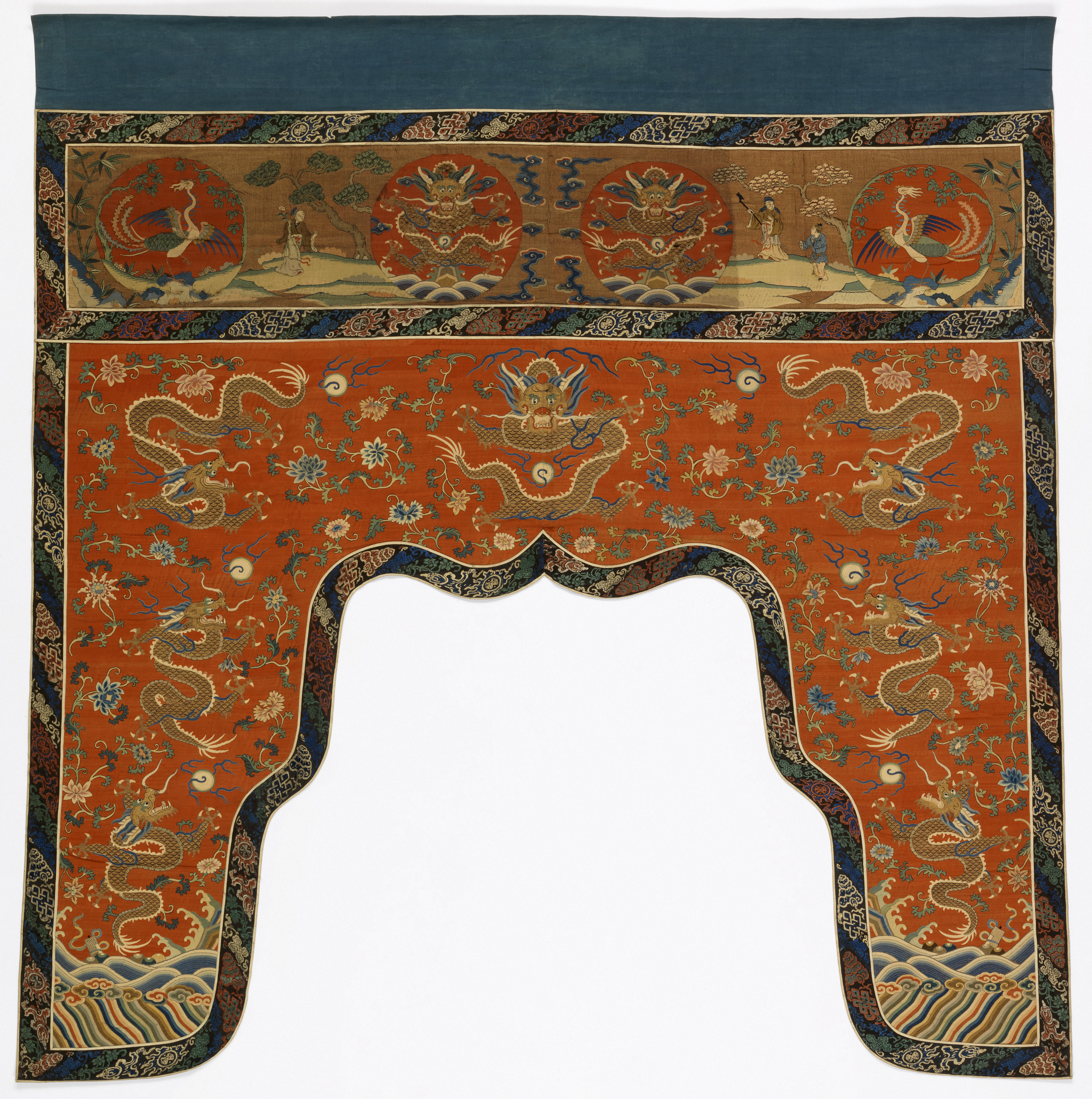Today’s Object of the Day is on view in Rebeca Méndez Selects (October 5, 2018–June 16, 2019) This semi-formal court surcoat (ji fu gua吉服褂) would have been worn by the wife of an imperial prince, a high-ranking clan member, or a Manchu official. Surcoats often featured flowers or birds. Here, roundels feature five cranes flying...
In celebration of Women’s History Month, March Object of the Day posts highlight women designers in the collection. This dragon vase was made at Frederick Dallas’s Hamilton Road Pottery by Maria Longworth Nichols. Nichols worked there before founding her own firm, Rookwood Pottery, later in 1880. This example is marked with a number “3” on...
This extraordinary chalice takes its inspiration from dragon-stem goblets made by the legendary Venetian glassworkers in the seventeenth century. In this example, also made in Venice but in the late nineteenth century by Salviati & Company, the dragons have been elevated to the body of the cup. Several remarkable glassworking techniques are on display in this object....
Dragon robes (ji fu吉服, lit. auspicious dress) originated in the Liao dynasty (907-1125), and were regulated as court dress under the Ming (1368-1644). The Qing dynasty (1644-1911) continued this usage, and standardized the nine-dragon design (the ninth dragon was positioned beneath the robe’s overlap). The dragon robe was worn with an ensemble of hat, surcoat,...
Table frontals were used on numerous types of Chinese tables: altar tables, dining tables, and magistrate’s desks. They covered the fronts, sides and legs of tables, and often coordinated with a set of matching chair covers. Such furnishings made furniture more flexible: the decoration could be adjusted for the season, the type of festivity, and...
Dragon robes were worn as court dress during the Liao (901-1125), Ming (1368-1644) and Qing (1644-1911) dynasties in China, with embroidered iconography used to symbolize the emperor’s dominion over land and sea. Common elements include waves, forming a wide band at the bottom of the robe, mountains in the central plane, and clouds, occupying the...
